<< Our Photo Pages >> Cahokia - Ancient Village or Settlement in United States in Great Lakes Midwest
Submitted by bat400 on Saturday, 01 February 2020 Page Views: 38950
Multi-periodSite Name: Cahokia Alternative Name: Cahokia MoundsCountry: United States Region: Great Lakes Midwest Type: Ancient Village or Settlement
Nearest Town: Collinsville
Latitude: 38.658472N Longitude: 90.05867W
Condition:
| 5 | Perfect |
| 4 | Almost Perfect |
| 3 | Reasonable but with some damage |
| 2 | Ruined but still recognisable as an ancient site |
| 1 | Pretty much destroyed, possibly visible as crop marks |
| 0 | No data. |
| -1 | Completely destroyed |
| 5 | Superb |
| 4 | Good |
| 3 | Ordinary |
| 2 | Not Good |
| 1 | Awful |
| 0 | No data. |
| 5 | Can be driven to, probably with disabled access |
| 4 | Short walk on a footpath |
| 3 | Requiring a bit more of a walk |
| 2 | A long walk |
| 1 | In the middle of nowhere, a nightmare to find |
| 0 | No data. |
| 5 | co-ordinates taken by GPS or official recorded co-ordinates |
| 4 | co-ordinates scaled from a detailed map |
| 3 | co-ordinates scaled from a bad map |
| 2 | co-ordinates of the nearest village |
| 1 | co-ordinates of the nearest town |
| 0 | no data |
Internal Links:
External Links:
I have visited· I would like to visit
DrewParsons would like to visit
bat400 visited on 1st Jan 2017 - their rating: Cond: 2 Amb: 4 Access: 5 A huge, sprawling site that gives you more and more if you spend some time at both the museum and walking the huge expanse. I've visited many times starting in the mid 1990's. The earthen mounds are so large and so many in number that it's easy to become overwhelmed and a bit numb ("... oh, there's another mound ...")
Walking around the site and climbing to the top of the largest earthwork in the US, Monk's Mound, gives you an idea of the size of the site. This is a truncated pyramid with several terraces. The footprint is larger than that of the stone pyramids of Giza.
davidmorgan have visited here
At its most populous Cahokia is believed to have had as many as 10000-20000 people living there and its central area covered six square miles. In addition to the mounds, a bastioned stockade around a central mound and plaza area, and the remains of rows of houses and other plazas have been found. The site has produced many finds, including copper items, fine pottery & carved tablets of stone. Burials of individuals with funeral goods and human sacrifices support the concept of a society focused on individual leaders or hierarchical lineages.
Some researchers (including Timothy Pauketat, Joeseph Galloy, Thomas Emerson, and John Kelly) believe that Cahokia, along with two other Mound Centers, the East Saint Louis" and Saint Louis Mound groups, were joined and served as a central ceremonial and administrative center to a much larger area of smaller settlements, farmsteads, and craft centers, In others words, they functioned as a city, producing an influx of peoples of multiple ethnic and language groups, spurring trade, and having a large influence on religious and technological culture up and down the Mississippi River and its regional watershed. Other researches (whom Galloy refers to as "minimalists') concede the size of each center, but doubt that the society was as complex as to be considered as as a city.
What happened to Cahokia’s inhabitants is not completely understood, but archaeology seems to point in the direction of a decline in the population starting in the 1200s, leading to it being abandoned by 1400AD.
The name ‘Cahokia’, comes from a tribe who inhabited the surrounding area some 200 yrs after the city was abandoned.
See individual site listings for major structures within the Cahokia complex, including Monk's Mound and Woodhenge.
For more, see the Cahokia Mounds State Historic Site, and the UNESCO World Heritage site.
The location given is for the park's museum entrance.
Note: First Notice for The Mississippian Conference at Cahokia Mounds on July 8, 2020. See Comments. More information as it is available.
You may be viewing yesterday's version of this page. To see the most up to date information please register for a free account.
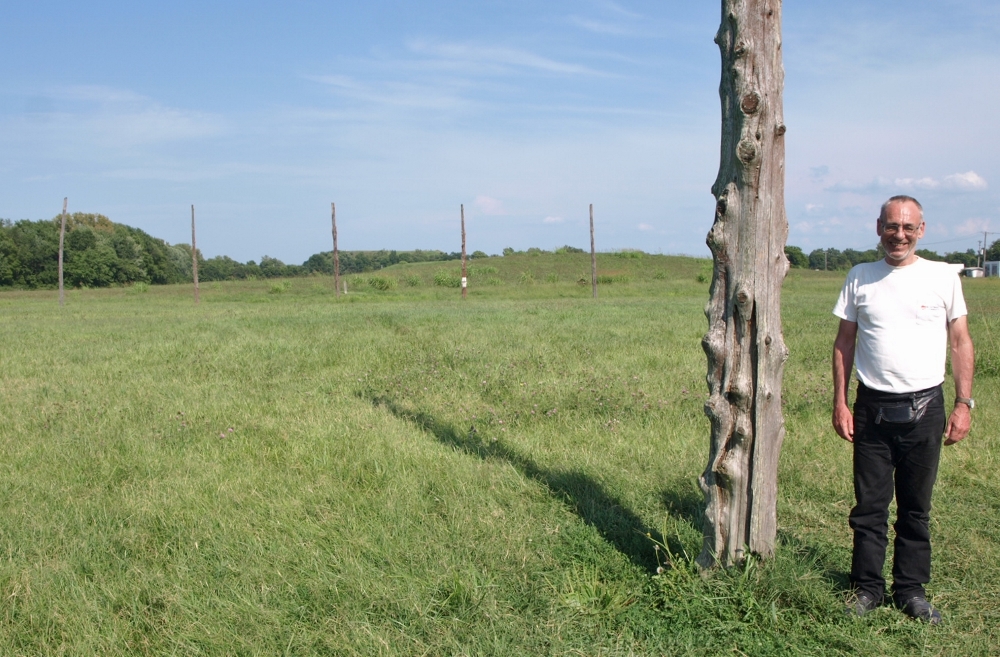
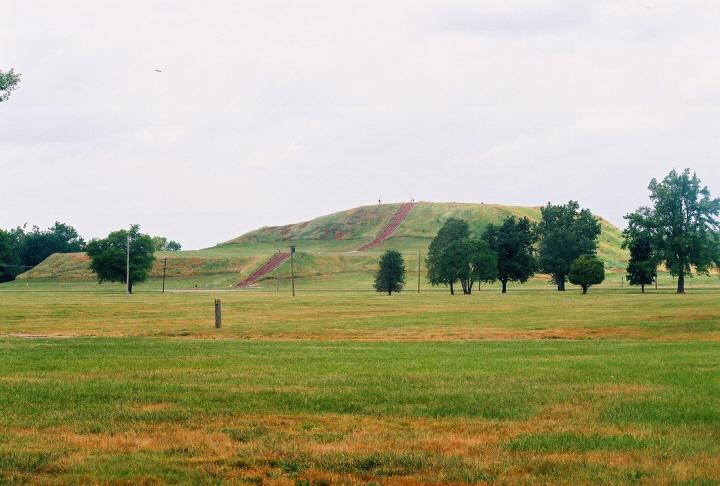
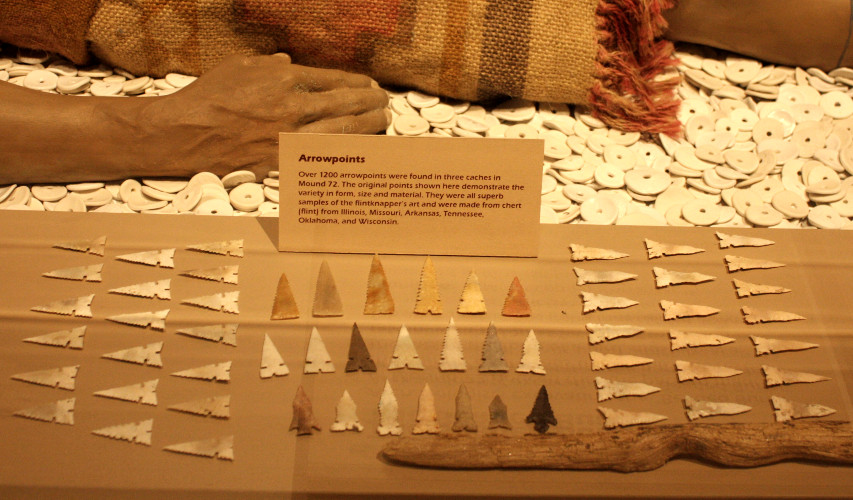
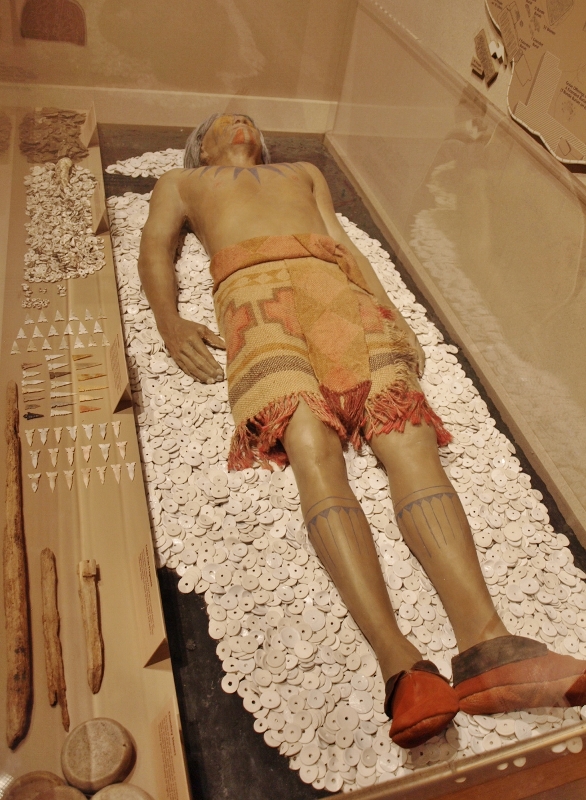

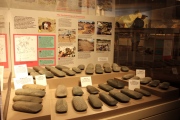
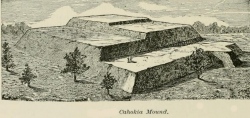

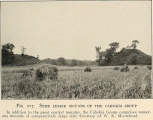

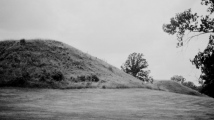
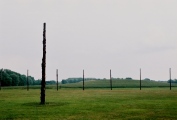



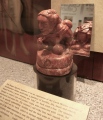


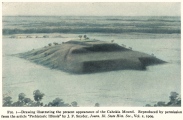
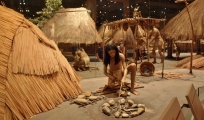

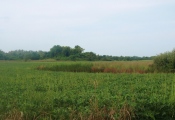

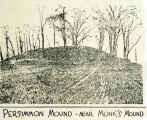
These are just the first 25 photos of Cahokia. If you log in with a free user account you will be able to see our entire collection.
Do not use the above information on other web sites or publications without permission of the contributor.
Click here to see more info for this site
Nearby sites
Click here to view sites on an interactive map of the areaKey: Red: member's photo, Blue: 3rd party photo, Yellow: other image, Green: no photo - please go there and take one, Grey: site destroyed
Download sites to:
KML (Google Earth)
GPX (GPS waypoints)
CSV (Garmin/Navman)
CSV (Excel)
To unlock full downloads you need to sign up as a Contributory Member. Otherwise downloads are limited to 50 sites.
Turn off the page maps and other distractions
Nearby sites listing. In the following links * = Image available
230m ENE 63° Cahokia - Mounds 30 and 31 Artificial Mound
239m NNW 341° Cahokia - Mound 36 Artificial Mound
270m SSW 204° Cahokia - Mound 55* Artificial Mound
337m N 358° Cahokia - Stockade* Misc. Earthwork
359m NNE 24° Cahokia - Ramey Group* Ancient Village or Settlement
388m NW 306° Cahokia - Monk's Mound* Pyramid / Mastaba
398m S 187° Cahokia - Museum* Museum
591m SW 220° Cahokia - Mound 60* Artificial Mound
604m N 352° Cahokia - Mound 5.* Artificial Mound
606m W 264° Cahokia - Mound 48 Artificial Mound
672m SW 228° Cahokia - Mound 59* Artificial Mound
889m W 281° Cahokia - Mound 42* Artificial Mound
920m SSW 208° Cahokia - Mound 72* Artificial Mound
1.3km W 277° Cahokia - Mound 44* Artificial Mound
1.3km NNW 341° Cahokia - Kunnemann Group* Ancient Temple
1.5km W 276° Cahokia - Woodhenge* Timber Circle
1.6km SSW 195° Cahokia - Mound 66 Artificial Mound
2.7km W 276° Cahokia - Powell Mound Artificial Mound
2.8km W 264° Fingerhut tract* Ancient Village or Settlement
5.1km N 350° Horseshoe Lake Mound* Artificial Mound
5.3km WSW 252° Sam Chucalo Mound* Artificial Mound
8.3km WSW 257° East Saint Louis Mound Center* Ancient Village or Settlement
11.2km W 261° Big Mound (St Louis)* Artificial Mound
17.6km WSW 238° Sugarloaf Mound, Missouri* Artificial Mound
24.0km E 97° Emerald Mound, Illinois* Artificial Mound
View more nearby sites and additional images






 We would like to know more about this location. Please feel free to add a brief description and any relevant information in your own language.
We would like to know more about this location. Please feel free to add a brief description and any relevant information in your own language. Wir möchten mehr über diese Stätte erfahren. Bitte zögern Sie nicht, eine kurze Beschreibung und relevante Informationen in Deutsch hinzuzufügen.
Wir möchten mehr über diese Stätte erfahren. Bitte zögern Sie nicht, eine kurze Beschreibung und relevante Informationen in Deutsch hinzuzufügen. Nous aimerions en savoir encore un peu sur les lieux. S'il vous plaît n'hesitez pas à ajouter une courte description et tous les renseignements pertinents dans votre propre langue.
Nous aimerions en savoir encore un peu sur les lieux. S'il vous plaît n'hesitez pas à ajouter une courte description et tous les renseignements pertinents dans votre propre langue. Quisieramos informarnos un poco más de las lugares. No dude en añadir una breve descripción y otros datos relevantes en su propio idioma.
Quisieramos informarnos un poco más de las lugares. No dude en añadir una breve descripción y otros datos relevantes en su propio idioma.